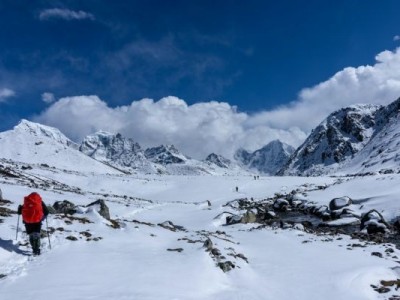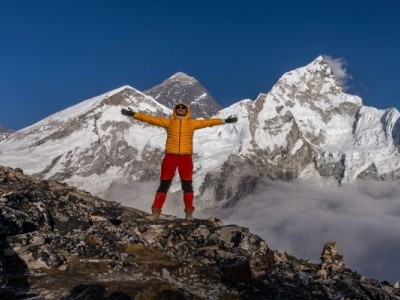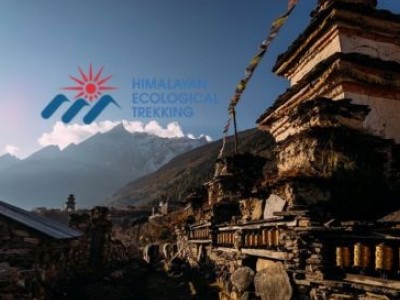Required Trekking Permits
Upper Dolpo Restricted - Area Permit
The majority of your Upper Dolpo trek permit cost comes from the government-run "restricted-area" permit. Foreign trekkers pay USD 500 for the first 10 days and USD 50 for each additional day. The Upper Dolpo restricted area permit fee has different functions: to limit the number of visitors for reasons of sustainability, generate income for conservation, and raise funds for community development projects in place in the local areas.
The permit fee is set at approximately 1,000 visitors a year, which is very low and makes Upper Dolpo among the most exclusive trekking areas in the world. Please note that processing takes 2 - 3 weeks through registered trekking agencies, while individual applications are not accepted. The permit is time-limited and has designated entry and exit roads, visitor duration, and requirements around the composition of the group.
Shey-Phoksundo National Park Entrance Fee
All visitors need to obtain a national park entry permit, which is at costs around NPR 3,000 plus VAT. For foreign nationals, this is around USD 25-30. This fee gives you access to Nepal's largest national park (Shey-Phoksundo), the incredible turquoise Phoksundo Lake, ancient gompas( monasteries), and the wildlife that you will be able to view while trekking through the park.
Lower Dolpo Buffer-Area Permit
Depending on your route, you might need to obtain a Lower Dolpo dedicated buffer-area permit (USD 20-30). The numerous Upper Dolpo trek permits/resources available all seem to omit this requirement, which could mean unexpected costs and delays.
TIMS & Guide-Escort Rules
Upper Dolpos' restricted status prohibits lone trekking or solo visitors, and therefore, hiring a guide is a must for every visitor. The Trekkers' Information Management System (TIMS) is the digital system that Nepal Tourism Board contingency on for rescue and evacuation if needed, while hired licensed guides must have first aid and experience in high altitudes, at a minimum, and be able to communicate in emergencies.
Flights & Ground Transport
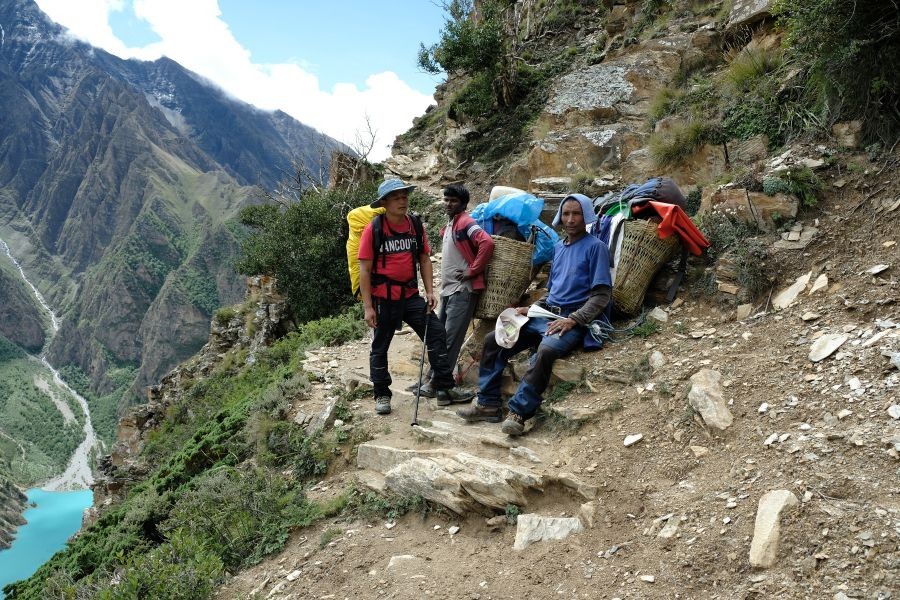
Kathmandu-Cochin and Cochin-Juphal Flight Logistics
Transportation for the Kathmandu-Cochin and Cochin-Juphal routes uses a complicated two-stage flight system that can dramatically affect the daily cost of your Upper Dolpo trek. Round-trip flight costs vary greatly by season; they typically are around USD 350-500 per person during normal times, rising to USD 600-800 per person during peak season.
The flights use 16-19 passenger Twin Otter aircraft, with strict weight restrictions. Weather dependency creates an infamous lack of reliability in scheduling(as true in all trekking flights), with as high as a 40% cancellation rate during monsoon transition times.
Buffer Days
Professional trekkers often build 2-4 buffer days into their planning, and even regimented trekkers will include at least 1 or 2 buffer days into their planning as insurance against flight cancellations, weather cancellations, or mechanical issues. These buffer days will cost roughly USD 100-200 for accommodation for each day, to purchase some insurance and peace of mind for losing entire trek investments for flights or missed treks due to a missed flight.
Land Transportation
Add another USD 50-150 for ground transportation between airports and trailheads. Depending on your group size and the seasonal road conditions. The emergency helicopter rides can be significantly important if things go wrong, too. Typically, about USD 3,000-5,000 per flight for a medical evacuation.
Guide, Porter & Staff Costs
Professional Guided Services
Licensed mountain guides charge USD 30-50 per day, depending on experience and certifications. The Upper Dolpo trek guide porter pricing includes food, accommodation, insurance, and gear for the guides. Top-level guides with the most Upper Dolpo experience provide safety management and cultural interpretation that would be quite valuable.
Porter and Support Staff
Porter services range in cost from USD 25-35 per day each. Typically, trekkers require 1 porter per 2 trekkers for their gear, and additional porters/staff if needed for the grouping equipment. Professional cook staff costs from USD 30-40 per day, and have command proficiency in high altitude cooking and nutrition management.
Insurance and Safety Coverage
Responsible agencies also invest substantially in staff insurance, emergency communication equipment, and evacuation coverage, which influences the overall total package pricing for the Upper Dolpo trek. Likewise, modern safety procedures, which involve the use of satellite communication devices, GPS tracking systems, and a complete first aid kit, require large expenditures.
Accommodation & Camping Logistics
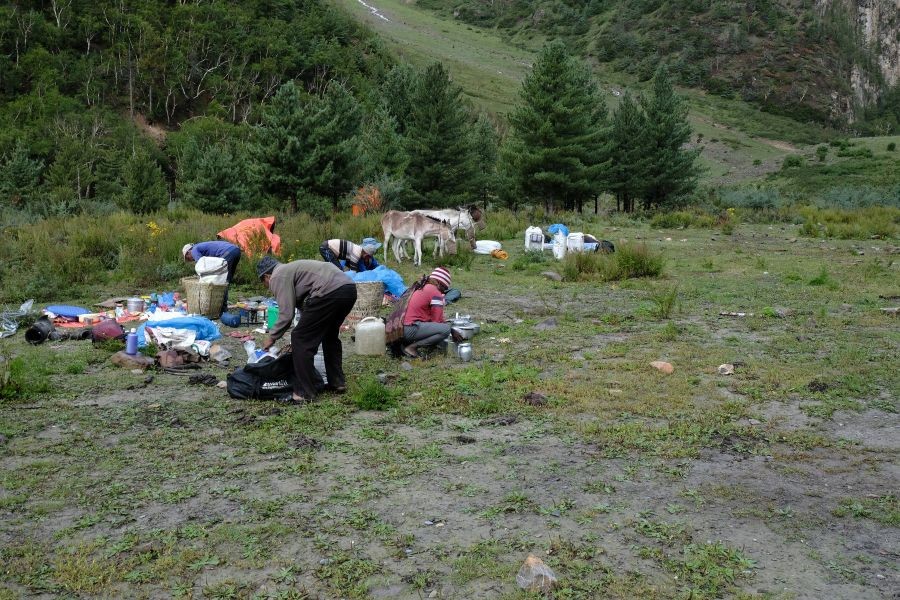
Camping systems with advanced logistics
Upper Dolpo provides an upper-range camping experience requiring advanced levels of logistics using four-season mountaineering tents, highly specialized equipment for extreme conditions, and a purpose-designed high-altitude cooking system. The kitchen tent system includes propane cooking equipment, water purification systems, and non-latrine-based waste management facilities.
To transport heavy equipment from remote, non-porter locations, there will be yak transportation services offered, which cost USD 25-40 per yak per day.
Scarcity of tea-houses
Upper Dolpo has a lower-density tea-house accommodation model than any of the more famous trekking circuits in Nepal, and thus, comprehensive camping support will be a necessity. The few and far between lodges lack heat, reliable and sufficient electricity, and/or necessary meal servings.
Costs in Gateway cities
The mid-range hotel cost in Kathmandu and Nepalgunj will be in the range of USD 30-80, while higher-end accommodation will be in the range of USD 150-300. Gateway city costs generally account for 10-15% of the total expenses of the trek.
Meals, Fuel & High-Altitude Logistics
Full Meal Planning
Nutrition in high altitude requires 4,000-5,000 calories of food every day through a well-planned menu. In addition to being able to provide 4,000-5,000 calories every day, special dietary needs such as vegetarianism, veganism, gluten-free needs require as much as an additional USD 15-25 per day through modified menu selections and the cost of goods (due to specialty sourcing).
Fuel Systems, Group Economics
The operation relied primarily on kerosene and propane to cook, with solar panels for electrical requirements. With economies of scale in groups, more people utilizing the same fuel consumption can drop costs on a per-person basis by USD 5-10 for larger groups (8-12 people) per day.
Water Purification Management
High-altitude hydration targets daily consumption of 4-5 liters per person, with professional operations utilizing advanced filtration systems and UV sterilisation. In remote locations, bottled water price points are USD 3-5 per liter, so ensuring a good purification system is economically essential.
Pricing Tiers & Package Comparisons
Budget-Level Packages
Budget Upper Dolpo trek packages range from USD 3,500-4,500 per person for 18-21 day journeys, and cost control focused on larger groups (8-12 people) and shared accommodations, maintaining safety standards while reducing luxury.
Mid-Range Value Packages
Mid-range packages cost USD 4,500-6,500 per person on average. They provide the best value while still having a small group (4-8 people), private tents, quality food, and a well-experienced guide. Mid-range packages also have improved equipment, comprehensive first aid kits, and the liberty to change the itinerary.
Premium and Luxury Packages
Premium and luxury Upper Dolpo trek packages cost above USD 7,000-15,000 per person and offer open helicopter access, deluxe camp accommodations, gourmet cuisine, and very low guide ratios. Premium or luxury features would include satellite communications, dedicated rescue coordination, and a cultural immersion experience.
Package Comparison Matrix
| Package Level | Price Range (USD) | Group Size | Accommodation | Guide Ratio | Special Features | | Budget | 3,500-4,500 | 8-12 people | Shared tents | 1:8-12 | Basic equipment, standard meals | | Mid-Range | 4,500-6,500 | 4-8 people | Private tents | 1:4-6 | Quality equipment, enhanced meals | | Premium | 7,000-15,000 | 2-4 people | Luxury camps | 1:2-4 | Helicopter access, gourmet service |
|
Additional Costs & Budget Considerations
Visa, Insurance, and Medical Requirements
Nepal visas cost between USD 30 and USD 125, depending on the duration. Travel insurance with mandatory helicopter evacuation coverage costs USD 150-400 and must explicitly cover high-altitude trekking over 4,000 meters. Prescription medications and altitude sickness medications cost USD 100-300.
Tipping and Personal Expenses
Tipping represents a considerable cultural obligation and cultural expectation, i.e., USD 12-20 per day for guides, and USD 8-15 per day for porters. For long-distance treks (21 days), tipping can total USD 400-600. Personal expenses such as water, snacks, and communication can be expected to cost USD 300-600 more in remote destinations that price inaccessibility into their services.
Emergency Services
Helicopter evacuation costs USD 5,000-15,000 depending on environmental conditions and medical complications. Comprehensive rescue insurance provides critical coverage for search operations, medical care, and repatriation services.
Money-Saving Strategies
Strategic booking and timing
Domestically, by booking 3-4 months out, savings of 25-40% can be achieved. Additionally, by booking in shoulder season (late winter/early monsoon), when reasonably consistent weather probabilities tend to yield, total package savings of 20-30% may also be available.
Group formation economics
If 4-6 members are willing to travel, cost sharing could be maximized while still maintaining flexibility. If the group was organized enough, discounts of USD 800-1500 per person could be realized compared to buying solo 'supplement' prices.
Equipment strategies
If personal gear was packed, rental fees could be reduced by USD 300-500, but international baggage regulations could limit this option. There are also local Kathmandu shops that have quality gear for sale at decent prices.
Booking Terms & Risk Management
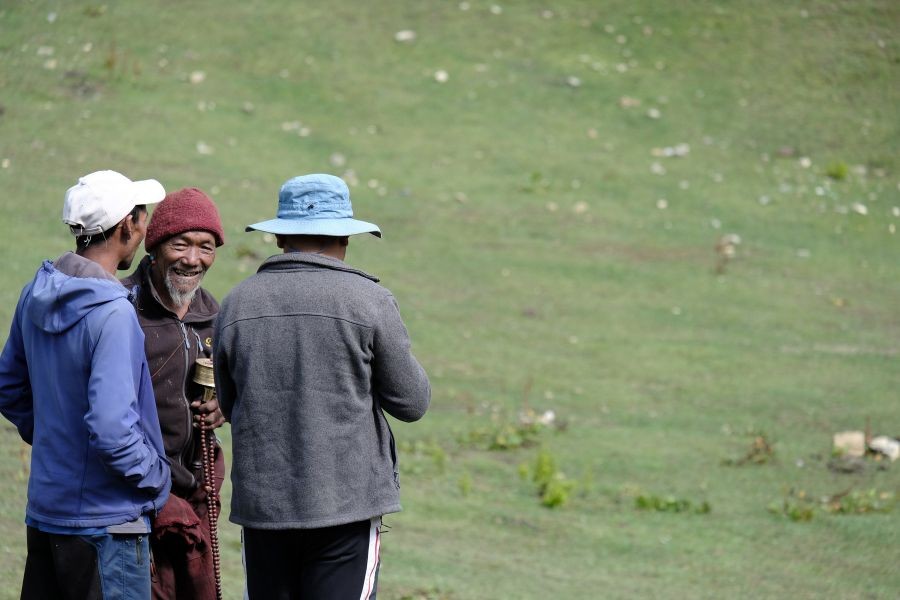
Payments
Professional agencies need a deposit from 25% to 35% with subsequent payments leading up to the final balance 30 to 45 days before departure. Credit card payments add a fee of 3% to 5% but offer dispute provisions with a credit card provider and possible travel insurance for coverage.
Currency and Exchange Rate Considerations
Upper Dolpo trek pricing involves three or four currencies. Consequently, the exchange rate will fluctuate, which can impact trek costs by 5% to 15% between booking and running the trek, stressing currency timing techniques to minimize costs.
Cancellation Policies
Among the reluctance for cancellation, industry standard practices of offering 50% to 80% refunds for cancellations made 60 days or more before departure, and diminishing up to 10% to 25% on last-minute cancellations. Carrying comprehensive travel insurance mitigates the disadvantage of cancellation costs for covered reasons.
Seasonal Optimization
Peak Season Overview
Spring (April - May) and fall (September - November) yield 30-50% price premiums because they have the best conditions, but are best booked 6-12 months in advance.
Opportunities at Shoulder Season
Late winter and early monsoon season save 20-35% off prices, but also have the potential for losses during an unexpected weather period, which will continue to lose savings through delays.
Frequently Asked Questions
What is the average budget for Upper Dolpo?
Budget travellers can hike Upper Dolpo at USD 3,200-3,800 if well-planned and group joined.
Can you trek solo?
Solo trekking is not allowed. Solo trekkers must use a guide and pay single supplements of USD 800-1,500.
Is emergency evacuation insurance mandatory?
Emergency evacuation insurance is not legally mandatory, but it is essentially mandatory. Insurance policies range between USD 150 and USD 400, and should include helicopter evacuation up to 6,000 meters.
What is included in all-inclusive packages?
Packages generally include: permits, flight costs, a guide, and all camping equipment, food for the trek. Packages exclude: international airfares, personal equipment, tips, and emergency/specialist services.
How do costs change if meals are delayed?
Delays usually incur additional accommodation costs of USD 100-200 a day. Some premier packages allow for delays.
Conclusion
Knowing the total costs of the Upper Dolpo trek will help the traveler find options for this unique adventure. The Upper Dolpo trek cost estimates range from budget USD 3,500 to luxury USD 15,000 per person; however, the cost provides access to one of the last pristine parts of Earth, where age-old Tibetan Buddhist cultures continue to thrive.
The Upper Dolpo restricted area permit fees and operational issues account for this special place's exclusivity and conservation requirements. Whether you select budget, mid-range, or luxury options, the Dolpo region trek cost offers transformative experiences through unmatched wild scenery, genuine cultural experiences, and personal fulfilment in one of Earth's last true wilderness frontiers.
We'd like to believe that by carefully planning to prepare this adventure, it is realistic, and you can get an idea of what the Upper Dolpo trek price 2025 will bring to you. You will also support local communities and conservation efforts to keep this incredible place as pristine as possible for the future generations of adventurers!
Contact us at Himalayan Ecological Trekking to plan your Upper Dolpo Trek!
Make an inquiry here:
Email: [email protected]
WhatsApp: +977 9851006023 (Bikesh Rana)
Familiar Packages you may like it:



